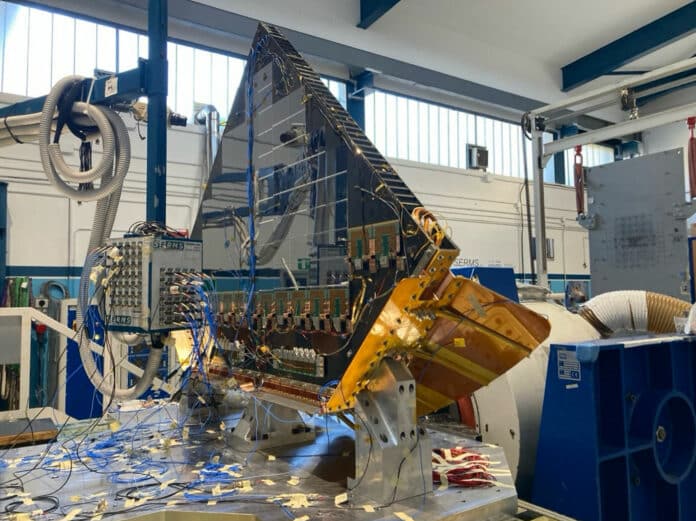The Alpha Magnetic Spectrometer (AMS) detector on the International Space Station (ISS) has been recording cosmic ray events for over a decade. With its augmented potential for discovery, the detector is set to receive another upgrade.
The new upgrade will enable scientists to investigate dark-matter-like signatures from cosmic rays. This might unlock our understanding of the Universe.
The AMS was installed on the ISS in 2011. Since then, it has recorded more than 200 billion cosmic ray events. While most of their sources are known, a few signatures in the data could point to dark matter.
AMS is capable of detecting a wide range of particles, including protons and heavy nuclei such as iron and silicon. However, what makes it particularly intriguing is its ability to detect positrons, which are the antimatter counterparts of electrons. Positrons and other antimatter particles are extremely rare in the Universe, so detecting them in high numbers is unexpected.
Scientists are currently studying the origin of these positrons, which could come from pulsars or other astrophysical sources. Alternatively, they could be a result of dark matter, which is a concept that fits well with the observed data. To investigate this further, the AMS collaboration is currently refurbishing the detector.
The main upgrade will be a new detector layer with a higher number of silicon strips that will increase the acceptance of recording infalling particles by 300%.
“By 2030, AMS will extend the energy range of the positron flux and reduce the error by a factor of two compared with current data,” says AMS spokesperson Sam Ting (MIT). This will allow the detector to investigate the positron signature even further.
The AMS is facing some heat-related challenges due to the degradation of its paint over time. The AMS team is taking proactive measures to address this issue by installing three new radiative surfaces. These surfaces will help to reflect excess heat and keep the AMS at operational temperatures once again.
This solution proves to be effective in maintaining the performance of the AMS and enabling it to continue delivering valuable insights from space.
The new upgrade being developed for AMS involves building and testing validation and qualification models of various parts, including electronics and hardware. If they pass all the tests at CERN, INFN Perugia, and IABG in Germany, the final flight model will be produced. Astronauts are already training with prototypes in space-like environments on Earth, and when the upgrade is launched in 2026, they will mount the new detector parts onto AMS during spacewalks.
“Everything is going very, very fast,” says chief engineer Corrado Gargiulo (CERN). “This is a requirement. Otherwise, we arrive too late at the ISS for the upgrade to make sense.” Indeed, the mission now has an end date. NASA has scheduled the deorbiting of the ISS for 2030, and until then, AMS will have plenty of cosmic ray events to record to explore the positron signature.
